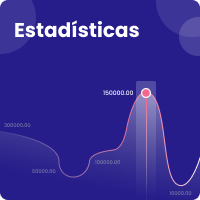Análisis de la derivada de presión en yacimientos naturalmente fracturados con fronteras parcialmente abiertas
Resumen
La complejidad de los recursos de rocas generadoras es cada vez mayor, por eso se precisa una óptima caracterización. Los modelos existentes para estudiar el comportamiento de la presión en formaciones heterogéneas consideran únicamente frontera abierta o frontera cerrada. En este trabajo se analizó la derivada de presión para un pozo vertical de petróleo en un yacimiento naturalmente fracturado con frontera externa abierta variable. La respuesta de presión está gobernada por dos parámetros: tasa final de flujo en la frontera externa (qWI) y tiempo en el que se inicia la invasión de fluido en la frontera externa (τ); dependiendo de la variabilidad de dichos parámetros, se presentan tres condiciones en las que actúa la frontera externa: cerrada, parcialmente abierta y abierta. Para cada caso estudiado se identificaron líneas y puntos característicos, base fundamental para generar las ecuaciones que determinan los parámetros que describen a este tipo de reservorios, como qWI) y τ. Por último, se extendió la técnica TDS para interpretar pruebas de presión en estos sistemas. La metodología se verificó satisfactoriamente con ejemplos sintéticos.
Referencias bibliográficas
Barenblatt, G., Zheltov, Y., y Kochina, I. (1960). Basic concepts in the theory of seepage of homogeneous liquids in fissured rocks (strata). Journal of applied mathematics and mechanics, 24(5), 1286-1303.
Del Angel, Y., Núñez-López, M., y Velasco-Hernández, J. (2014). Pressure transient analysis with exponential and power law boundary flux. Journal of Petroleum Science and Engineering, 121, 149-158.
Engler, T., y Tiab, D. (1996a). Analysis of pressure and pressure derivative without type curve matching, 4. Naturally fractured reservoirs. Journal of Petroleum Science and Engineering, 15(2-4), 127–138.
Engler, T., y Tiab, D. (1996b). Analysis of pressure and pressure derivative without type-curve matching, 5. Horizontal well tests in naturally fractured reservoirs. Journal of Petroleum Science and Engineering, 15(2-4), 139–151.
Escobar, F., Sanchez, J., y Cantillo, J. (2008). Rate transient analysis for homogeneous and heterogeneous gas reservoirs using the TDS technique. Ciencia, Tecnología y Futuro, 4(4), 45-59.
Escobar, F., Hernandez, D., y Saavedra, J. (2010). Pressure and pressure derivative analysis for long naturally fractured reservoirs using the TDS technique. Dyna, 77(163), 102-114.
Escobar, F., Zambrano, A., Giraldo, D., y Cantillo, J. (2011). Pressure and pressure derivative analysis for non-newtonian pseudoplastic fluids in double-porosity formations. Ciencia, Tecnología y Futuro, 5(3), 47-59.
Escobar, F., Zhao, Y., y Zhang L. (2014). Interpretation of pressure tests in horizontal wells in homogeneous and heterogeneous reservoirs with threshold pressure gradient. Journal of Engineering and Applied Sciences, 9(11), 2220-2228.
Escobar, F., Camacho, R., y Rojas, J. (2014). Pressure and pressure derivative analysis for tripleporosity and dual-permeability systems in naturally fractured vuggy reservoirs. Journal of Engineering and Applied Sciences, 9(12), 2500-2512.
Hsieh, B., Chilingar, G., y Lin, Z. (2007). Propagation of radius of investigation from producing well. Energy Sources, Part A, 29(5), 403-417.
Hsieh, B., Chilingar, G., y Lin, Z. (2008). Determination of the constant coefficient in pressure propagation equation. Energy Sources, Part A, 30(13), 1223-1232.
Mathews, C., y Russell, D. (1967). Pressure buildup and flow tests in wells (SPE Monograph Series, vol. 1). Dallas, EE. UU.: Society of Petroleum Engineers of AIME
Pascal, H., y Pascal, F. (1985). Flow of non-Newtonian fluid through porous media. International Journal of Engineering Science, 23(5), 571-585.
Tiab, D. (1993, 1 enero). Analysis of Pressure and Pressure Derivatives Without Type-Curve Matching: I-Skin and Wellbore Storage. En Society of Petroleum Engineers, SPE Production Operations Symposium. Conferencia llevada a cabo en Oklahoma, EE. UU. doi: 10.2118/25426-MS.
Tiab, D. (1995). Analysis of pressure and pressure derivative without type-curve matching: I-skin and wellbore storage. Journal of Petroleum Science and Engineering, 12(3), 171-181.
Van Everdingen, A., y Hurst, W. (1949). The application of the laplace transformation to flow pro- blems in reservoirs. Journal of Petroleum Technology, 1(12), 305-324b. doi:10.2118/949305-G.
Wang, D., Yao, J., Cai, M., y Liu, P. (2015). Transient pressure and productivity analysis in dual medium reservoir with changing outer boundary flux (artículo inédito remitido para su publicación a Journal of Natural Gas Science Engineering).
Warren, J., y Root, P. (1963). The Behavior of Naturally Fractured Reservoirs. Society of Petroleum Engineers Journal, 3(3), 245-255. doi: 10.2118/426-PA.











